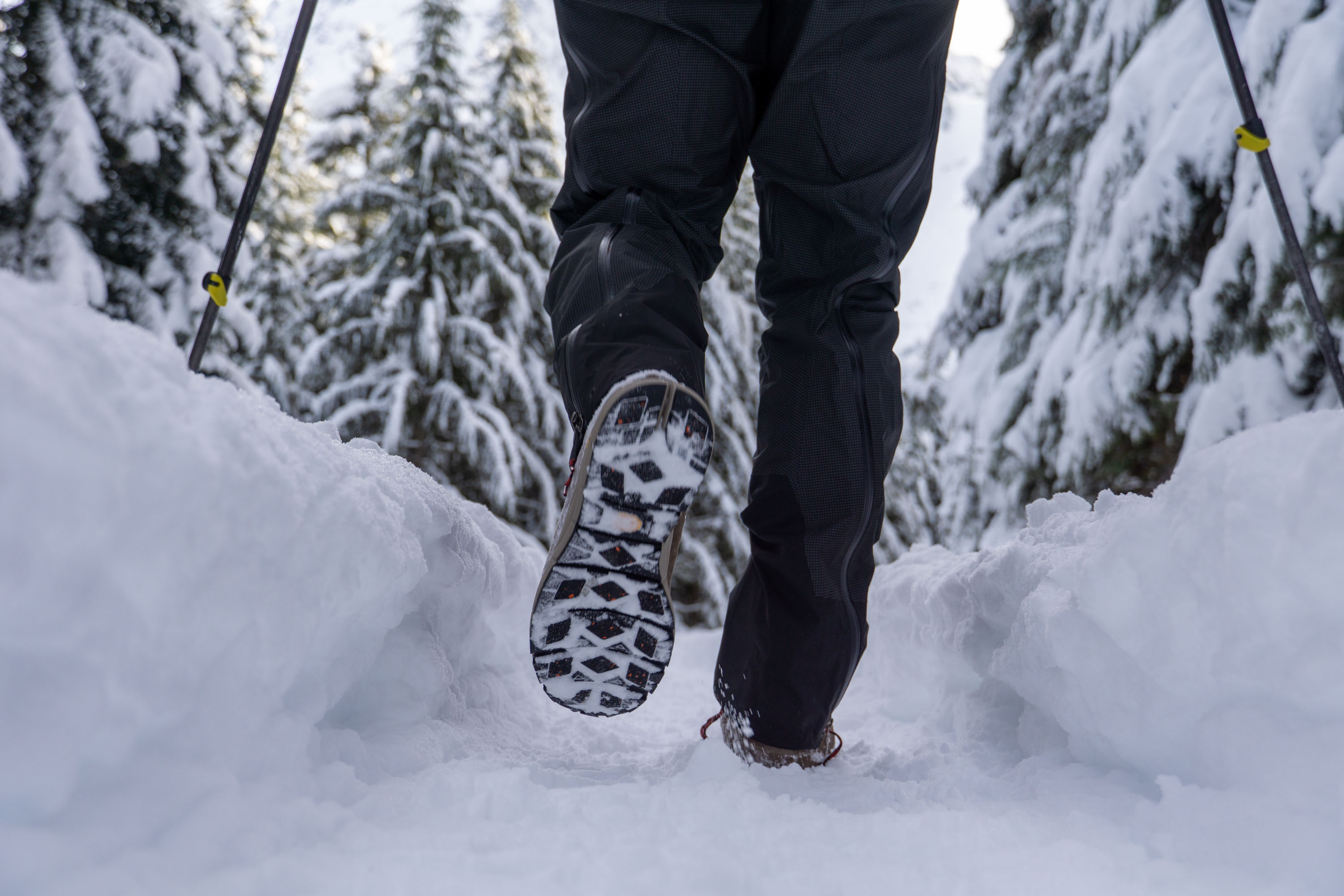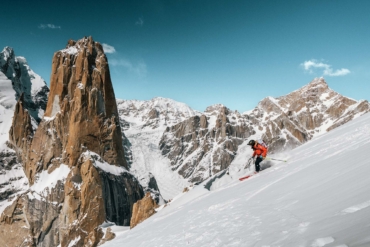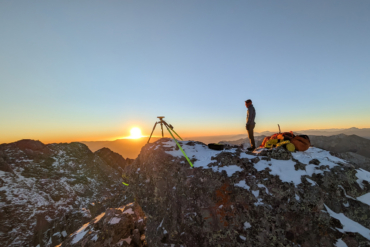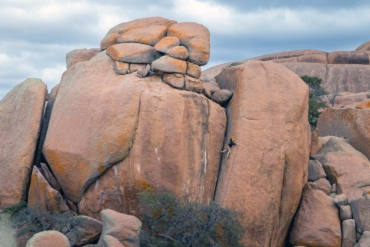When I spied the LOWA Alpine Ice GTX at Outdoor Retailer 2 years ago, it seemed impossibly small to be warm. The lack of bulk and the thin midsole was astonishing for a low-altitude mountaineering boot with a supergaiter. I desired the tight boot dimensions but wasn’t willing to lose toes to gain dexterity.
I used the boots for two consecutive seasons in backcountry Alaska, hunting down first ascents on big, multipitch ice. I hiked, climbed, and stood in deep snow and hard ice in temperatures rarely above the teens. The winds were often howling, and the routes pushed the limits of my ice-climbing skills.
I was not disappointed, and my feet were often the only ones not numb. This was surprising as my climbing partners were in much bulkier boots.
In short: The LOWA Alpine Ice GTX climbed ice exceptionally well due to its low bulk and kept my feet warm in extremely cold conditions. To date, they are the lowest-bulk low-altitude mountaineering boot I’ve used for ice climbing — and the warmest.
LOWA Alpine Ice GTX Climbing Boot Review
On Approach
I almost always had snow shoes or crampons on the LOWA Alpine Ice GTX in Alaska while approaching ice routes. My feet were buried in snow or standing on frozen creeks, with the weather mainly in the teens. My feet were cold only once because I had to sit on a snow machine for a while, but once I started moving, my feet were comfortable. They were not cold outside of that instance.
The boots are stiff, like any other boot destined for crampons. I didn’t at all think it was any harder to walk in than any other boot I’ve used for crampons in the mountains. The forefoot rocker is minimal compared to a regular hiking boot, but the boot felt natural for me to walk in for being a stiff, single mountain boot.
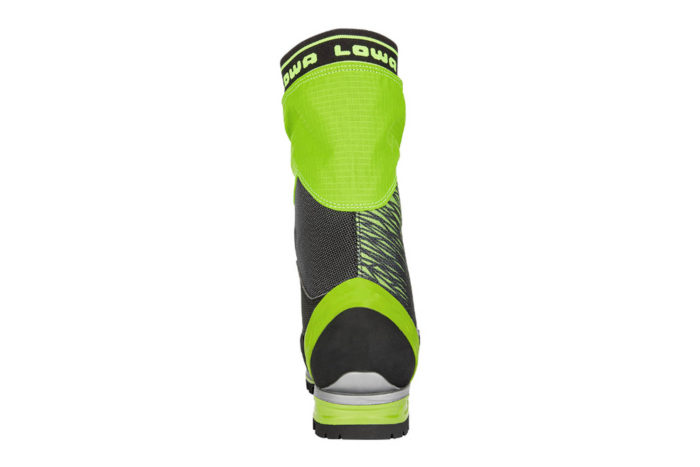
I post-holed through waist-deep snow on some of the ramps leading to the bottom of the routes. The zippered gaiter did a great job of keeping snow out of my boot and keeping my laces dry and unfrozen. The water-resistant TIZIP gaiter closure never froze up and was easy to operate, even with gloves on, thanks to its substantial zipper pull.
Plunging the heel deep into snow on descents felt secure, thanks partly to the impressively thin midsole and outsole. My foot felt stable due to the low platform and minimal amount of heel drop. There’s a deep cutout in the inner liner for the Achilles area, and it provided clearance and comfort when the descent was super steep.
The Vibram Alp Ice Trac outsole adhered well when boot packing on occasions when I didn’t use crampons or snowshoes. The stiff and protective toe cap prevented toe bangs, and the tread cleared snow admirably when I was the one stomping the trail.
On Belay
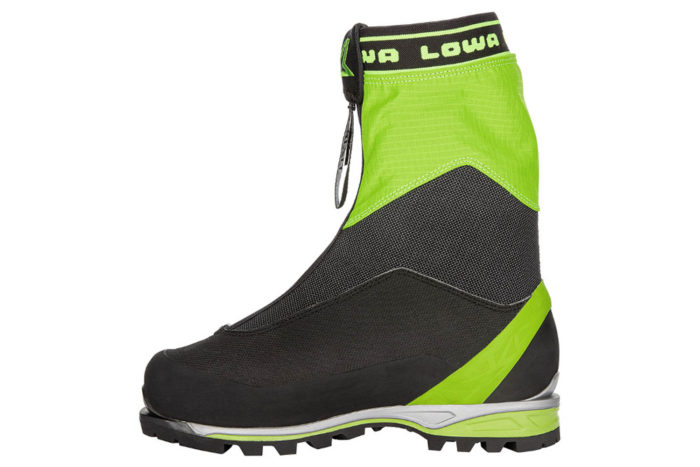
I thought for sure that I would have to suffer through cold feet at each belay. Standing on ice in steel crampons that conduct heat away almost always freezes my feet until I’m climbing again. The thin midsole and low upper bulk further hinted at numb toes at every belay. I never packed chemical toe warmers, but I accepted some. I figured my eyes would not deceive me regarding the insulating value of the lowest bulk boot I’ve ever clamped crampons on.
But to my utter surprise, I never got cold feet over two seasons at a belay. Not once. I found this amazing. And my partners complained of cold feet and numb toes in much bulkier and more popular boots. The last climb I did in them, the temperature never got into double digits. Both partners complained at every belay about their feet, but not me.
On Route
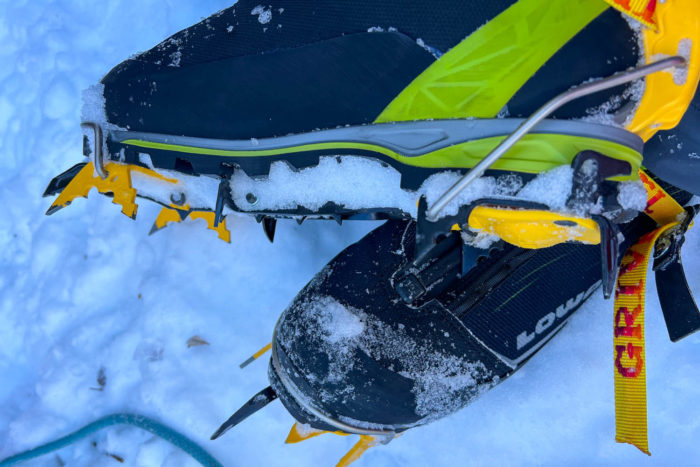
This is where the LOWA Alpine Ice GTX smashed. Thanks to the thin upper and midsole, my feet were closer to the crampon points than in other boots. This made the front-point placements more accurate and the feedback so much better. I didn’t kick into the same placement as many times because I could sense it was a solid stick. And being closer to the bottom points did the same when I flat-footed it on ramps. The difference in dexterity and feedback was noticeable compared to the bulkier boots I’ve used in Alaska.
The lower overall dimensions also made sneaking my foot between chandeliers and curtains easier. The same went for stepping through my legs. I definitely spared some torn gear as I was much less likely to catch a crampon point on my pants.
But the most important advantage of the low bulk was the decreased leverage the front points had on my ankle joint. The drop in force my calves had to endure compared to my other climbing boots was greatly appreciated.
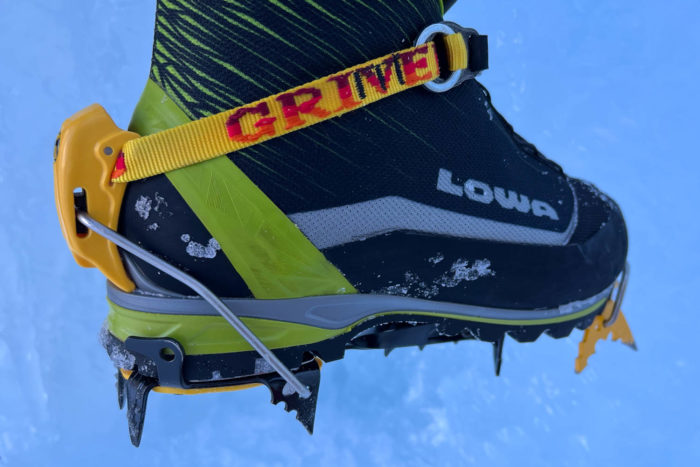
The boot was very supportive when the ice got steep, partly due to the relatively tall inner boot (for a supergaiter system). With the laces cranked down, I didn’t have to consciously keep my foot or ankle rigid nor think about keeping my heel level. The support of the inner boot structure felt appropriate for vertical ice.
The slick and clean outer surface of the boot meant there was nothing to catch. I never snagged a crampon point or trailing rope on my boot. The minimalist outer surface also made it easy to strap snowshoes.
The LOWA Alpine Ice GTX is automatic crampon-compatible, and I had no issues setting both Grivel and Petzl models. The front and rear crampon grooves are distinct and deep. I never had a crampon detach.
LOWA Alpine Ice GTX Fit

I have a wide forefoot and narrow heel but vertically thin feet Insulate Pro Alu-Coated w/ Fleece — the classic duck foot. The LOWA Alpine GTX fit the width of my forefoot better than any other mountain boot I’ve tried. And it hugged my heel extremely well laterally. But the total internal volume was a tad much for my thin feet.
I would crank down on the laces after reaching the base, but eventually, I could sense some heel lift while front pointing. This occasionally lessened my overall feedback on the security and position of my front points. And it could have added to calf fatigue.
If I added a thicker insole, I’m almost certain this heel lift issue would have been mitigated entirely. I don’t think this will be an issue for most users; my feet are very bony and thin.
The Nicks
I only had two nicks to chalk up for the LOWA Alpine Ice GTX.
Competitors for this boot niche have introduced BOA lacing systems. This is a huge advantage, especially with supergaiter boots. I took the longest to tighten my boots at the base of the routes, and it was a painstaking process. I had to unzip the gaiters, remove my gloves, crank on the laces, and try to keep the knot tight with cold fingers. I was jealous as I heard the click of my partners’ BOA dials; they were done with both of their boots before I had untied my first lace. And they kept their hands and fingers warm — no small advantage in the single digits.
It was also impossible for me to adjust my laces while climbing. My partners did this multiple times, even while leading.
The traditional lacing system LOWA uses was effective when the lace tension was set correctly. The lower lace lock worked like a charm, and the metal upper eyelets allowed me to smoothly crank tension into the laces. But it didn’t hold a candle to the adjustability of the BOA Fit System.
And this old-school lacing system is heavier than the BOA system. Each of my boots weighs 2 pounds, 2.8 ounces (men’s size 10), which is admirable for the category. But this was about 3 ounces heavier than my climbing partner’s BOA-equipped boot of the same size.
Conclusion: LOWA Alpine Ice GTX Climbing Boot
The LOWA Alpine Ice GTX was excellent for big Alaskan ice objectives over the last two seasons, and it’s astonishing I never had cold feet at any belay or while climbing. It was the anomaly among three different climbing partners who all wore different brands of boots. The boots were also the lowest bulk boots, no small feat considering the warmth.
They climbed well on steep ice, with the smaller dimensions and supportive inner structure aiding my footwork. The only real gripe in this department was compared to the BOA Fit System, I couldn’t adjust lace tension easily or on the fly.
If you have a wide forefoot and warmth is a primary factor, the LOWA Alpine Ice GTX is an excellent contender to help you battle gravity in frigid conditions. And at an MSRP of $675, it is one of the less expensive supergaiter options.

